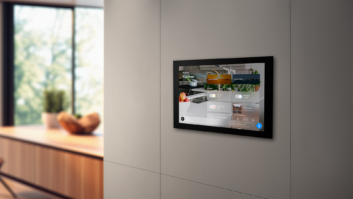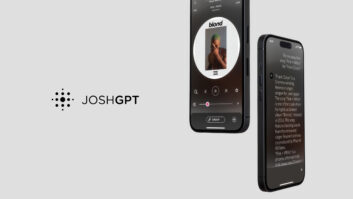Everyone loves a good race between worthy opponents. It’s your favorite college football or basketball team against their archrival. It’s your favored politician against the “other guy.” It’s one contestant in a reality show against another.
In our industry, rivalries are a constant. One can go as far back as Tesla’s AC vs. Edison’s DC “current race” or more recent HDR-10 vs. Dolby Vision.
In most cases there is a clear victor while in other cases technology makes it possible for both to succeed in the marketplace. As we dive headfirst into the world of connected and communications products, the “battles” are in some ways similar: Amazon Alexa vs. Google Home/Assistant vs. Apple Siri; Windows and associated hardware vs. Mac OS and its products; iOS vs. Android; Zigbee vs. Z-Wave; Sonos vs. HEOS vs. PlayFi vs. Bluesound; Roku vs. AppleTV vs FireTV vs. Chromecast; HDMI vs. DisplayPort, and many more. In each of these current races for consumer attention and retail market share, four companies are duking it out: Amazon, Apple, Microsoft, and Alphabet/Google. As we move into October and the selling season, the products from Amazon and Apple already have been announced. In a launch event on Tuesday, Google laid its card on the table. Going down the list, everything is in the pot, and they have raised the stakes. They are not holding any cards to bluff; let’s see what is in their hand.
For background and to lay the groundwork, Google executives set forth some common threads. “Moving from ‘mobile first’ to ‘AI first’ and its expression as the Google Assistant was key. The takeaway is not what the device is, but what it can do and what the machine language (ML) thought process behind the action is. Another platform foundation from Sundar Pichai, Google’s CEO, is worth pondering as you create, provision, install, and maintain systems are four key attributes so that, to paraphrase Pichai, “Computers should adapt to people, not the other way around.” Here are some more specific examples:
• Conversational and Sensory: The product must seamlessly interact with the user through a variety of natural and seamless ways: voice, vision, gesture and more.
• Ambient: The ability to be there where you are, with whatever device is there.
• Contextual: Thoughtful application of location, needs and activities.
• Computer (Adaptive) Learning: The system/product must learn and adapt over time.
That’s the fuel, but what about the Google’s new products, as it powers through this “AI First” vision?
As expected, there are two additions to the Google Home line. Using our “competition” theme, the new Google Home Mini, available On October 19 at $49.99 could be said to be Google’s answer to Amazon’s Dot. Perhaps, but it has a softer appearance with “chalk,” “charcoal,” and “coral” fabric colors for the cover and a less hockey puck-like appearance. The “360-degree sound” comes from a 40mm driver, and we’ll have to wait until it’s in hand to hear how it compares to the Dot.

Google Mini, in coral
Functionally, Google Home Mini has the same “touch-based” interface with LEDs behind the top surface. Of course, it is the Google Assistant’s capability as well as direct support for Chromecast streaming that separates it from the competitors. With Mini’s already a part of the “buy a new Pixel 2 phone and get a free Mini” promotion, this is going to be a hotly competitive race.
With the original Google Home already going up against Amazon Echo, their new Google Home Max is at the higher end of the scale with a $399 price that tops Apple’s HomePod by $50 and is double the retail of the new Sonos One. As with all three Google Home products, a softer, fabric-covered appearance is one differentiator, as is the obvious attraction of the Google Assistant. Further differentiating it is a 3.5mm audio input, so that it may be fed by external sources, the ability to stand vertically or horizontally using a magnetic stand, and audio powered by a pair of 3.5mm woofers and two 70mm tweeters in a sealed enclosure, a built-in AC power supply as opposed to the Amazon products’ USB connection to a “wall wart,” and, of course, the use of LEDs and touch/tap for the physical interface.
Head to head against HomePod, Google Home Max has a similar “smart sound” system that senses the location in the room and adjusts the sound accordingly, and the same multi-room capability offered by Apple and Amazon.

Google Max
Of course, the formal announcement of the Pixel 2 smart phone with a 5-inch, 1920×1080, AMOLED screen starting at $649 and Pixel 2XL with a 6-pix, pOLED, 18:9, 2880×1440 QHD screen starting at $899 was expected. The competition here will be with the new iPhone 8, iPhone 8 Plus, and iPhone X. We’ll leave the details on that to others, but there are two items of interest for readers here.
First, the new Pixel 2 phones join the growing list of new handsets that have dropped the traditional 3.5mm headphone jack to go wireless. Yes, an adapter is supplied, but you should clearly ante for Bluetooth headphones. The surprise, however, is that Google is now competing with Apple not only on phones, but with Apple/Beats, as well, with its Pixel Buds.
Pixel Buds, available later this year at $159, will feature some interesting twists on traditional in-ear buds. They are compatible with Android 5.0 and higher or iOS 10.0 or higher phones. When used with Android 6.0 or higher models, they have one-touch access to the Google Assistant. Even better, the Pixel Buds also have direct access to Google Translate. That lets a user take advantage of the natural language capability to listen to a non-English speaker and understand what they are saying without reaching for the phone. If two people each have the Buds but speak different languages, this allows direct conversation even though neither person speaks the other’s language.
Clearly, this will start as a one-SKU line that won’t begin to totally compete with Apple, but the race will have started. It will be interesting to see what direction it goes in.
The new line also appears to have Microsoft in its sights, as well. If you were shown the forthcoming Pixelbook without being told what it was and who it was from, a quick glance might lead you to believe that it was a new MacBook or Surface Book. It weighs in at 2.4 pounds and is only 10mm thick. With a 12.3-inch, 2400×1600 LCD screen in a “four-way,” 360-degree, fold-over configuration with backlit keyboard, this high-end Chromebook seems to have what it takes to compete. Onboard storage ranges from 128GB to 512GB and 8GB to 16GB RAM means that the cloud-centric product provides local storage, but the competitive question is how it will compete without the MacOS or Windows 10 and their associated software options, programs and apps.
Rounding out the new line us Daydream View. The latest version of Google’s approach to VR/AR, it has new colors, wider lenses, and is compatible with all Daydream-ready phones. Indeed, that describes the new Pixel 2 phones, as they are more tightly designed for AR use with their new camera and 60fps capability, with more than 250 titles available and more to come.
Curiously, with new “streaming dongles and boxes” introduced in the past few weeks from Apple TV, Amazon FireTV, and just this week from Roku, it is surprising that there was no new Chromecast hardware announced. Presumably the price and capability of the current models, in concert with the Google Assistant and the new Home products, meant that new streamers weren’t needed. As for as the competitive race, while Roku leads the market share race, it is worth noting that more than 55 million Chromecasts have been sold to date.
A final note of interest is that in addition to their own online Google Store, a carrier deal with Verizon for the Pixel 2 phones and broad distribution ranging from Best Buy to Bed, Bath and Beyond along with other chains and retailers, Google will start the introduction process with pop-up stores on the October 19 intro date for many of the new products. A New York location at the Flatiron Building and an LA location on Melrose Avenue in West Hollywood will further stoke the competition.
As a play-by-play on the competition, it should be noted that the continuing themes of Assistant-driven products as a common tie was frequently repeated. That, if nothing else, is what defines the competition and the true race ahead. At the end of the day it isn’t what the products are, but how they “think,” how they act and respond, and what they do.
A good example is the tie between the forthcoming Nest Hello, Google’s expression of a connected video doorbell. Rather than simply turn on the camera when someone rings the bell or passes under the sensor, it will use facial recognition to determine who is there and announce that through Google Home products. Call it “door caller ID” with “Aunt Maggie is at the door” giving you the opportunity to either hide or unlock/answer the door is a great expression where Google’s new “Made by Google” line headed.
How the competition will react and who wins the race to consumer acceptance and market share dominance is what, indeed, makes this a great race.







